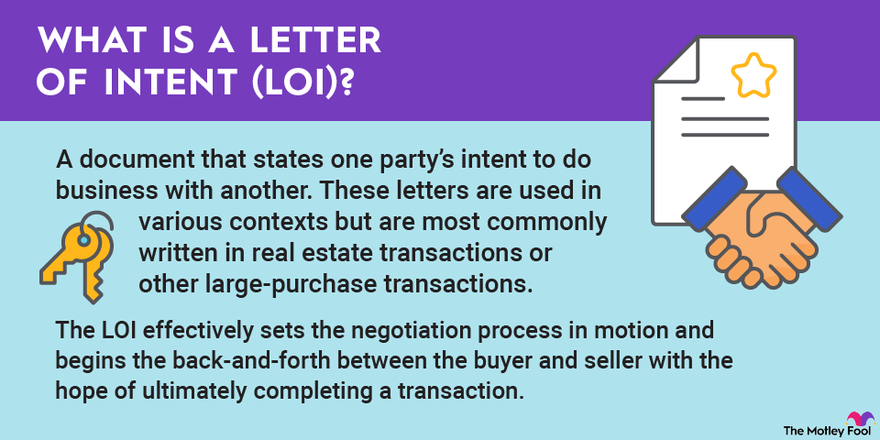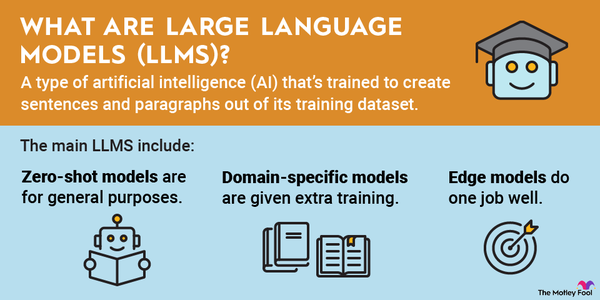A letter of intent, or LOI, is a document that states one party’s intent to do business with another. These letters are used in various contexts but are most commonly written in real estate transactions or other large-purchase transactions.
The LOI effectively sets the negotiation process in motion and begins the back-and-forth between the buyer and seller with the hope of ultimately completing a transaction.

What is a letter of intent?
What is a letter of intent?
A letter of intent, or LOI, is used as a preliminary statement by one party that intends to do some form of business with another. You might see an LOI in the context of a real estate transaction or in the beginning stages of a mergers and acquisitions (M&A) deal.
In either scenario, the LOI exists to formally begin the due diligence process on both sides. It clarifies key points before the transaction can take place and states the general nature of the deal before it gets done.
Interestingly, LOIs aren’t legal documents; they are non-binding. That is, the writer of an LOI doesn’t have a legal obligation to necessarily finish the deal in question. The LOI simply states the author’s intent to move forward on a transaction.
What’s the point of an LOI?
What’s the point of an LOI?
It’s best to look at an LOI as a preliminary commitment letter: One party effectively says that they’re preparing to transact with another. It’s nothing more than a declaration of intent. It is not a binding contract or an agreement of any sort.
LOIs can also be seen as documents that exist to protect both the buyer and the seller throughout the ongoing discussions. Non-disclosure agreements, or NDAs, may be included on an LOI to stipulate the components of a transaction that both parties plan to keep confidential throughout the negotiation process.
It’s possible, and even common that the terms of an LOI might not carry through to the final transaction. This is expected and normal in the ordinary course of business.
A letter of intent isn’t legally binding in and of itself.
When would an individual use an LOI?
When would an individual use an LOI?
A very common situation in which a regular person would use an LOI is a home purchase. Upon securing a mortgage preapproval and identifying a property you’d like to buy, you might be asked by your mortgage lender to write an LOI outlining your intent to purchase.
This formally sets in motion the mortgage approval process and acts as a starting point for the lender to begin its due diligence on the property. In this context, the LOI might include the address of the new property, the amount you intend to finance, and the names of all borrowers requesting the loan.
The terms of the loan might vary over time, depending on the borrower’s overall financial picture, as well as their willingness to take on certain types of mortgage debt. But the general provisions of the letter will be the same, i.e., the address of the new property and the people borrowing money.
Note, again, that the LOI is not a binding document and does not obligate the writer to purchase the property; instead, the LOI should be seen as a formality to properly start off the actual borrowing process. Ultimately, the property will trade when there is a signed contract between buyer and seller, and the mortgage company has agreed, in full, to lend money to the borrower (if applicable).
The bottom line on letters of intent
LOIs are quite common in the business world. You’re more likely to see them exchanged if you work in a corporate environment, but you might also see them pop up in your personal life.
If you take anything away, know that an LOI is used to formally begin a negotiation process, but the document isn’t binding in and of itself.




















































